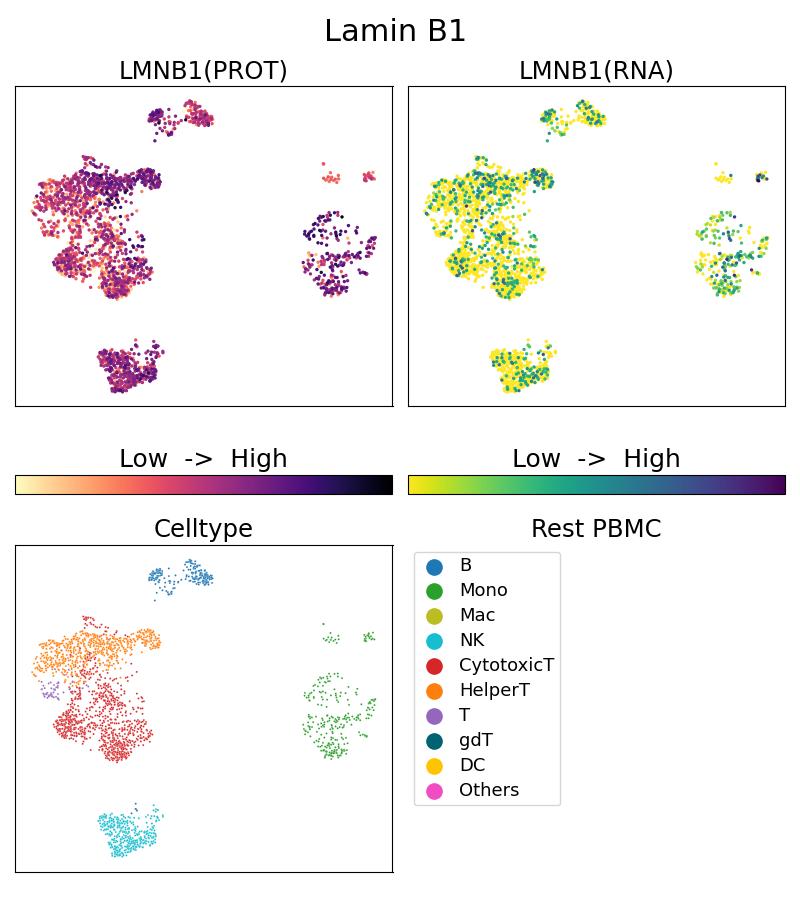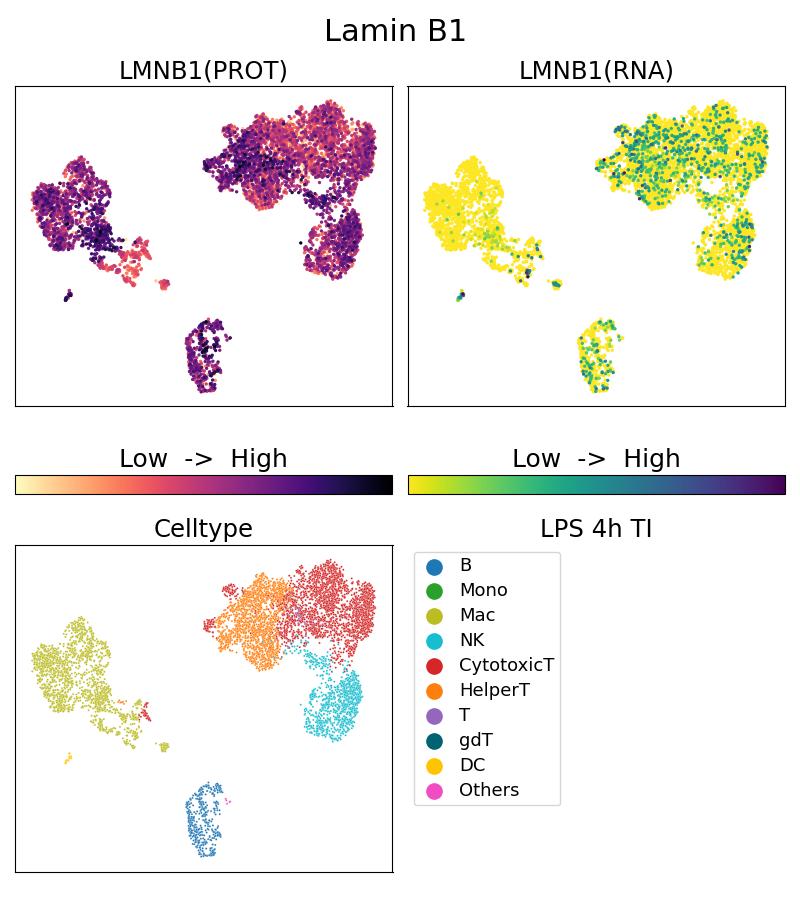Anticorps Monoclonal anti-Lamin B1
Lamin B1 Monoclonal Antibody for Single Cell (Intra)
Hôte / Isotype
Mouse / IgG1
Réactivité testée
Humain
Applications
Single Cell (Intra)
Conjugaison
5CFLX Fluorescent Dye
CloneNo.
3C10G12
N° de cat : G66095-1-5C
Synonymes
Galerie de données de validation
Applications testées
| Résultats positifs en Single Cell (Intra) | 10x Genomics Gene Expression Flex with Feature Barcodes and Multiplexing product. |
Dilution recommandée
| Application | Dilution |
|---|---|
| SINGLE CELL (INTRA) | SINGLE CELL (INTRA) : <0.5ug/test |
| It is recommended that this reagent should be titrated in each testing system to obtain optimal results. | |
| Sample-dependent, check data in validation data gallery | |
Informations sur le produit
G66095-1-5C cible Lamin B1 dans les applications de Single Cell (Intra) et montre une réactivité avec des échantillons Humain
| Réactivité | Humain |
| Hôte / Isotype | Mouse / IgG1 |
| Clonalité | Monoclonal |
| Type | Anticorps |
| Immunogène | Lamin B1 Protéine recombinante Ag20522 |
| Nom complet | lamin B1 |
| Masse moléculaire calculée | 66 kDa |
| Numéro d’acquisition GenBank | BC012295 |
| Symbole du gène | Lamin B1 |
| Identification du gène (NCBI) | 4001 |
| Conjugaison | 5CFLX Fluorescent Dye |
| Forme | Liquide |
| Méthode de purification | |
| Tampon de stockage | PBS with 1mM EDTA and 0.09% sodium azide |
| Conditions de stockage | 2-8°C Stable for one year after shipment. 20ul contiennent 0,1% de BSA. |
Informations générales
Lamins are components of the nuclear lamina, a fibrous layer on the nucleoplasmic side of the inner nuclear membrane, which is thought to provide a framework for the nuclear envelope and may also interact with chromatin. The nuclear lamina consists of a two-dimensional matrix of proteins located next to the inner nuclear membrane. The lamin family of proteins make up the matrix and are highly conserved in evolution. During mitosis, the lamina matrix is reversibly disassembled as the lamin proteins are phosphorylated. Vertebrate lamins consist of two types, A and B. This gene encodes one of the two B type proteins, B1. This protein is not suitable for samples where the nuclear envelope has been removed.



